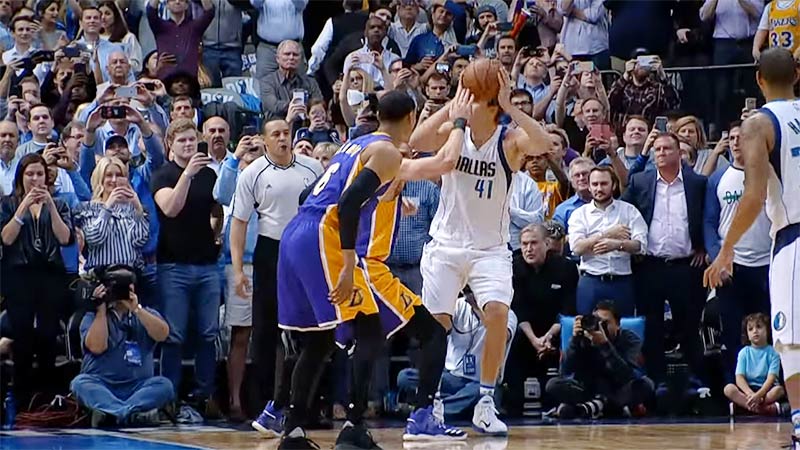In basketball, a power forward is a crucial position on a team, typically occupying the frontcourt alongside the center. Also known as the “four,” the power alone plays a versatile role that requires a combination of size, strength, and agility.
This position is responsible for providing a solid presence in the paint while also being capable of stepping out to the perimeter.
Power forwards are generally taller and bulkier than guards or small forwards but not as tall as centers, allowing them to excel in interior and mid-range shooting.
They are skilled at rebounding, using their physicality to secure missed shots and create second-chance opportunities for their team.
In this article, we’re gonna explore what is a power forward in basketball.
What Is A Power Forward In Basketball?
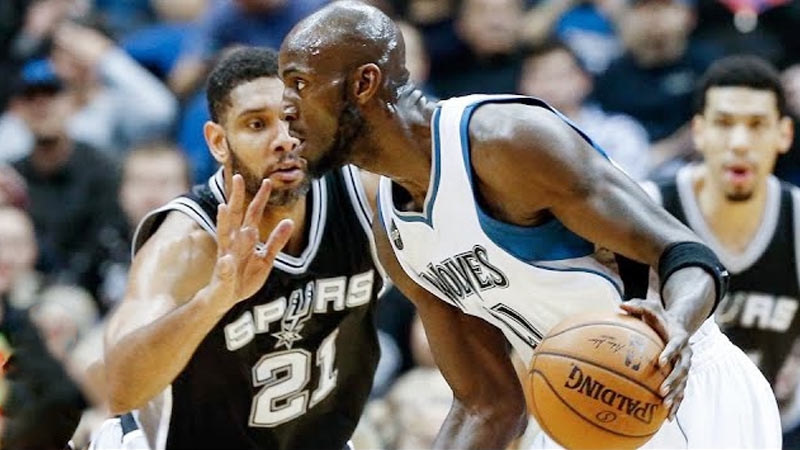
A power forward in basketball is a crucial position that plays a versatile role on the team. This article will provide an in-depth understanding of the power forward position, its responsibilities, and the skills required to excel in this role.
Role And Responsibilities:
The power forward, also known as the “four,” is a frontcourt player who works alongside the center. They combine size, strength, and agility in the team.
The power forward is responsible for providing a solid presence in the paint and being capable of playing both inside and outside.
Interior Presence:
Power forwards excel in the interior aspects of the game, using their size and strength to dominate the paint. They are skilled at rebounding, using their physicality to secure missed shots and create second-chance opportunities for their team.
Mid-Range Shooting:
A significant aspect of a power forward’s game is their ability to step out and shoot from mid-range. They possess the skills to knock down jump shots and stretch the defense. This capability adds versatility to their offensive repertoire and creates spacing on the court.
Screening And Post-Play:
Power forwards are crucial in setting screens for their teammates, creating scoring opportunities, or opening up space for shooters.
They are adept at posting up against defenders, utilizing their size and footwork to score near the basket or create passing opportunities for their teammates.
Defensive Contributions:
On the defensive end, power forwards guard the opposing team’s forwards. They must possess the strength to defend against physical players and the agility to contest shots and protect the rim.
Their defensive presence is essential in securing rebounds, protecting the paint, and disrupting the opposing team’s offensive strategies.
Responsibilities Of A Power Forward
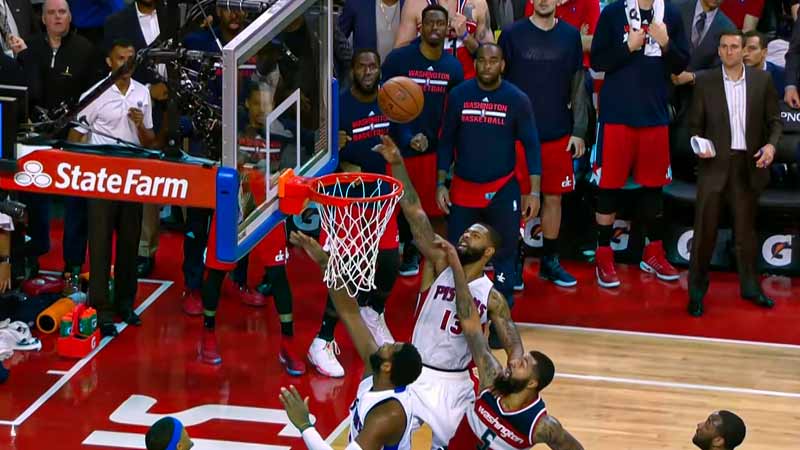
The power forward has a variety of responsibilities on both offense and defense.
Here are some of the main ones:
Rebounding
One of the primary duties of a power forward is to grab rebounds on both ends of the floor. Rebounding is crucial for gaining possession of the ball, preventing second-chance points for the opponents, and creating fast-break opportunities for their team.
Power forwards need good positioning, timing, anticipation, and physicality to out-rebound their opponents.
Scoring
Another crucial role of a power forward is to score points for their team. Power forwards can score in different ways, such as posting up near the basket, shooting mid-range jumpers, driving to the rim, or even shooting three-pointers if they are stretch fours.
Power forwards need good footwork, balance, shooting touch, and finishing ability to score efficiently.
Defense
A third significant responsibility of a power forward is to play defense against their counterparts or other players on the opposing team. Power forwards must be able to defend inside and outside players, depending on the situation.
They need good lateral quickness, strength, agility, and awareness to contest shots, block shots, steal passes, and force turnovers.
Teamwork
A final important aspect of a power forward’s role is to work well with their teammates on both ends of the floor. Power forwards must communicate effectively, set screens, make passes, cut to the basket, space the floor, and execute plays. They also need good leadership skills, especially if they are one of the team’s stars or captains.
What Skills Do Power Forwards Need?
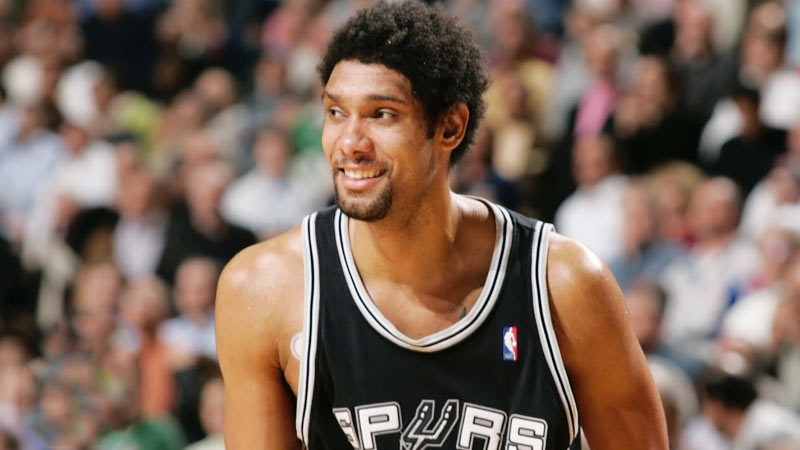
To be a successful power forward in basketball, a player must have a combination of physical attributes and technical skills.
Here are some of the most essential ones:
Height And Weight
Power forwards need a good size and weight advantage over opponents. This helps them dominate in the paint, score over smaller defenders, and protect the rim. However, they also need to be careful not to be too heavy or slow, and they lose mobility and stamina.
Strength And Endurance
Power forwards need a lot of strength and endurance to withstand physical contact and fatigue throughout a game. This helps them fight for rebounds, finish through contact, and defend against more prominent players. They also need good conditioning and nutrition to maintain their health and performance.
Shooting And Scoring
Power forwards need a reliable shooting and scoring ability to contribute to their team’s offense. Depending on their role and style, they must be able to shoot from different distances, angles, and situations. They also need to be able to score with both hands, use other moves, and draw fouls.
Dribbling And Passing
Power forwards need a decent dribbling and passing ability to handle the ball and create opportunities for themselves and their teammates.
They need to be able to dribble with both hands, protect the ball from defenders, and make intelligent decisions. They must also pass accurately, quickly, and creatively, especially when they are double-teamed or face pressure.
Rebounding And Defense:
Power forwards need superb rebounding and defense ability to help their team win games. They must be able to box out, jump high, grab loose balls, and outlet them.
They also need to be able to guard multiple positions, switch screens, rotate on help defense, and play with intensity and discipline.
Some Famous Power Forwards In Basketball History
Many great power forwards in basketball history have excelled at their positions and achieved remarkable feats.
Here are some of the most famous ones:
Tim Duncan
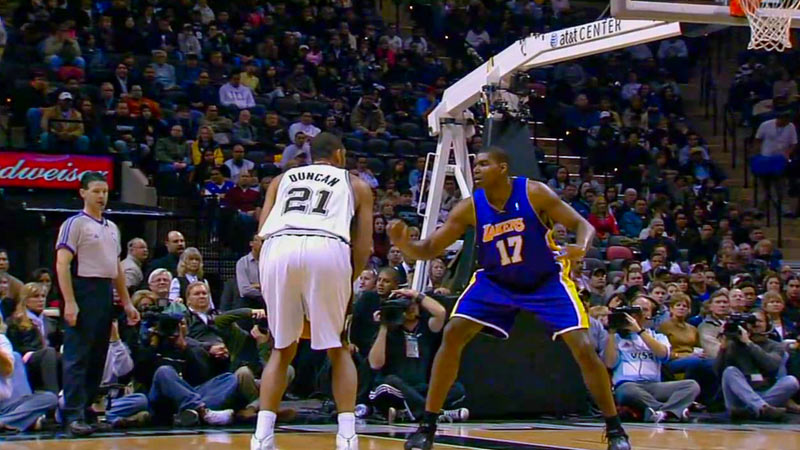
Widely regarded as the most incredible power forward of all time, Tim Duncan played for the San Antonio Spurs from 1997 to 2016.
He won five NBA championships, two NBA MVP awards, three NBA Finals MVP awards, 15 NBA All-Star selections, 15 All-NBA selections, and 15 All-Defensive selections. He is known for his fundamental skills, consistency, leadership, and clutch performance.
Karl Malone
Nicknamed “The Mailman” for his delivery of points and rebounds, Karl Malone played for the Utah Jazz from 1985 to 2003 and the Los Angeles Lakers from 2003-04. He is the second all-time leading scorer in NBA history with 36,928 points.
He won two NBA MVP awards, 14 NBA All-Star selections, 14 All-NBA selections, four All-Defensive selections, and two Olympic gold medals. He is known for his strength, durability, scoring prowess, and pick-and-roll partnership with John Stockton.
Dirk Nowitzki:
The first European player to win an NBA MVP award in 2007, Dirk Nowitzki played for the Dallas Mavericks from 1998 to 2019. He won an NBA championship in 2011 and was named the NBA Finals MVP.
He also won 14 NBA All-Star selections, 12 All-NBA selections, an NBA Three-Point Shootout title in 2006, and a FIBA World Cup title in 2002 with Germany. He is known for his unique shooting ability as a stretch four, fadeaway jumper, clutch performance, and loyalty.
Charles Barkley:
Nicknamed “The Round Mound of Rebound” for his exceptional rebounding ability despite his relatively short height of 6 feet 6 inches (1.98 m), Charles Barkley played for the Philadelphia 76ers from 1984 to 1992, the Phoenix Suns from 1992 to 1996, and the Houston Rockets from 1996 to 2000.
He won an NBA MVP award in 1993, 11 NBA All-Star selections, 11 All-NBA selections, two Olympic gold medals, and an NBA rebounding title in 1987. He is known for his aggressiveness, versatility, charisma, and outspokenness.
Kevin Garnett:
One of the most versatile and intense players of all time, Kevin Garnett played for the Minnesota Timberwolves from 1995 to 2007 and from 2015 to 2016, the Boston Celtics from 2007 to 2013, and the Brooklyn Nets from 2013 to 2015.
He won an NBA championship in 2008 with the Celtics and was named the NBA Defensive Player of the Year that same year.
FAQ
What is the role of a power forward in basketball?
The power forward, often called the “4,” is a versatile player who typically plays close to the basket but can also step out to the mid-range area. Their primary responsibilities include scoring inside the paint, rebounding, defending, and setting screens to create scoring opportunities for their teammates.
How does a power forward differ from a center?
While both power forwards and centers play in the frontcourt, power forwards tend to be more mobile and versatile. They often can shoot from mid-range, handle the ball, and move well laterally on defense. Conversely, centers are typically taller and specialize in scoring near the basket and protecting the rim.
Can power forwards shoot three-pointers?
Yes, many modern power forwards possess the ability to shoot three-pointers. As the game has evolved, power forwards are expected to stretch the floor and provide outside shooting threats. This skill adds a new dimension to their game and makes them harder to defend.
Who are some notable power forwards in basketball history?
There have been numerous legendary power forwards in basketball history. Some notable examples include Tim Duncan, Karl Malone, Kevin Garnett, Charles Barkley, and Dirk Nowitzki. These players showcased exceptional skills, leadership, and dominance in their eras.
What are the key attributes of a successful power forward?
Successful power forwards typically possess a combination of size, strength, agility, basketball IQ, and a diverse skill set. They should excel at scoring inside, rebounding, defending inside and on the perimeter, and have good court awareness. A strong work ethic, competitiveness, and leadership qualities are also beneficial for excelling in this position.
Conclusion
A power forward in basketball plays a crucial role in offense and defense. This versatile player combines strength, agility, and scoring ability to dominate the game near the basket.
Power forwards are known for their physicality, rebounding prowess, and ability to score from inside and outside the paint.
They often serve as a team’s enforcer, providing a solid presence in the low post while also possessing the versatility to stretch the defense with their shooting range. Overall, the power forward position is integral to a basketball team’s success.

